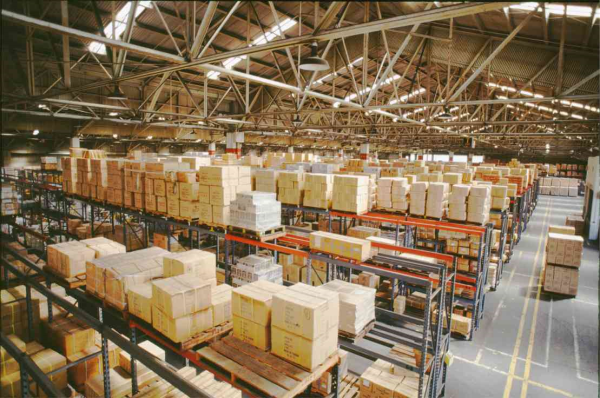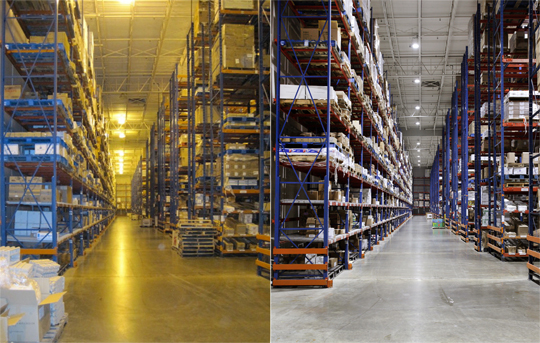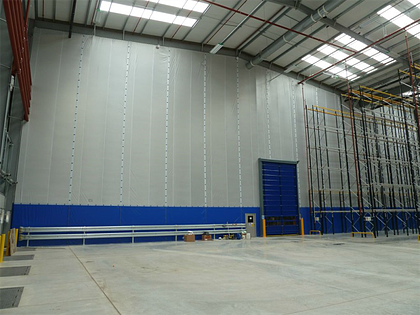How to reduce your warehouse energy costs and carbon footprint
5 energy saving tips from the Remax team
-resized-600.jpg)
The two biggest energy consumers in a warehouse are lighting and temperature control (ie. heating, cooling, or refrigeration). It follows therefore that reducing the costs of these two major contributors is the quickest way to make energy savings in your warehouse.
Every warehouse can be made more energy efficient by taking some simple steps. For example:
- Installing shading around the building can reduce cooling costs
- Using battery powered forklifts can reduce load on your exhaust fans and ventilation systems.
In this news post we offer some tips on how to save yourself energy and money while also reducing your warehouse’s carbon footprint.
1) Reduce your lighting costs
By adopting more efficient lighting systems most warehouses can save as much as 50% on their energy bill.
A simple adjustment of lighting power density can save a lot of money. The Building Code of Australia stipulates the required illumination power density for each area of any building. Wholesale storage and display areas require 10 Watts per square metre, while currently staff areas require 3 W/m2 and lobby entrances 15 W/m2.
By making sure your lights are adjusted to these requirements you can save yourself a lot of energy and money.
2) Change to fluorescent lighting
Another feature of good lighting design is using fluorescent lighting. Many warehouses use sodium or metal halide designs, but replacing them with fluorescent can not only lead to an energy saving of up to 80% but can also result in better lighting, as illustrated by the picture below.

The final lighting consideration for all warehouses is the use of daylight. Glazed skylights on north and south facing walls can help provide the optimal diffused daylight needed for a well illuminated warehouse. Diffused daylight is a better light source than electric lighting because it doesn’t cast the same shadows that overhead lights do and it reaches more of the warehouse.
Daylight in the workplace is also associated with higher worker production and morale. By matching a photo-control system to well-designed skylights you can have auto adjusting lights to keep the warehouse illuminated as the daylight fades while saving money during the day.
3) Install insulation in your warehouse
The largest cost next to lighting for any warehouse is the money spent on managing the temperature. Roof and wall insulation is important as a first strategy for reducing energy outlays. If you need to add more insulation to either of these structures, consider doing it during other building renovations or maintenance to reduce the cost of a one-off job.

4) Change to energy saving doors
The next largest concern for insulation is warehouse doors. Doors that are insulated are necessary for any warehouse trying to maintain a strict temperature and defray energy costs. As an open door provides the largest portal for energy loss in any warehouse, it is important that your doors are high-speed and easily repaired. By having well insulated, fast moving doors you can save a lot of money from energy escape.
Where a door must remain open, consider an air curtain. This will create a barrier of air that keeps the temperature stable even while the door is open. Air curtains can effectively reduce up to 80% of energy loss through a doorway. This means the savings made from the added insulation quickly pays for the initial expense. They are also effective at defending against airborne pests.
5) Consider further green energy saving measures
The following tips can help you save energy while also reducing your carbon footprint:
- Reducing the amount of exposed paving and other similar surfaces can help keep your building cooler in summer. These surfaces provide a reflective surface for sunlight and also store heat, releasing it later in the day. This can have a considerable effect on the temperature of your warehouse.
- Planting trees around the perimeter of the building and making shaded areas will cut some of the external heating, allowing you to reduce your cooling bill and making your warehouse more carbon neutral.
- Using battery-powered forklifts can reduce your carbon footprint by decreased emissions but it can also save you money on repairs. The reduced load on your exhaust fans and ventilation systems from an absence of exhaust fumes will increase the life and performance of both of these systems.
- Choosing building materials that are manufactured nearby will reduce your carbon footprint since the materials travel less distance.
- Using recycled steel and wood can reduce cost and make your building more carbon neutral. If you cannot use recycled materials in the main structure think about them for your cafeteria space or other personal facilities.
Get more information about reducing warehouse energy costs
These quick tips aim to highlight some areas to consider changing in your warehouse and storage facilities. The expert Remax team are always happy to help with ideas for making your warehouse more efficient.
To find out more about warehouse energy efficiency, get in touch with the expert Remax team online or call us on 1800 010 221.





